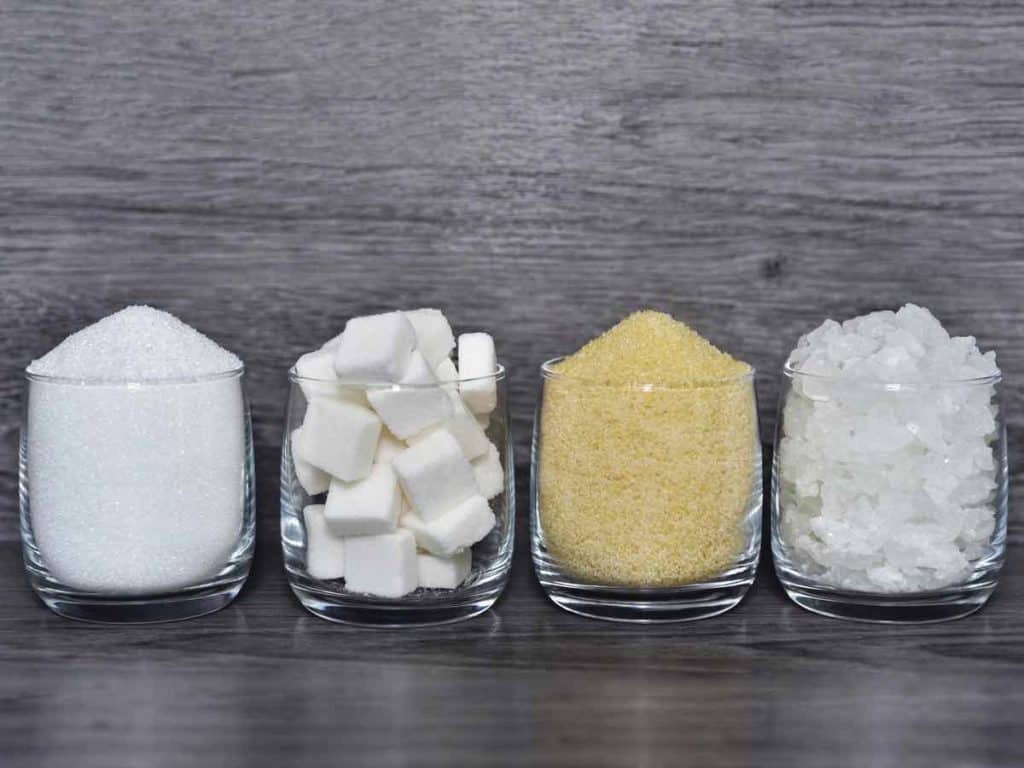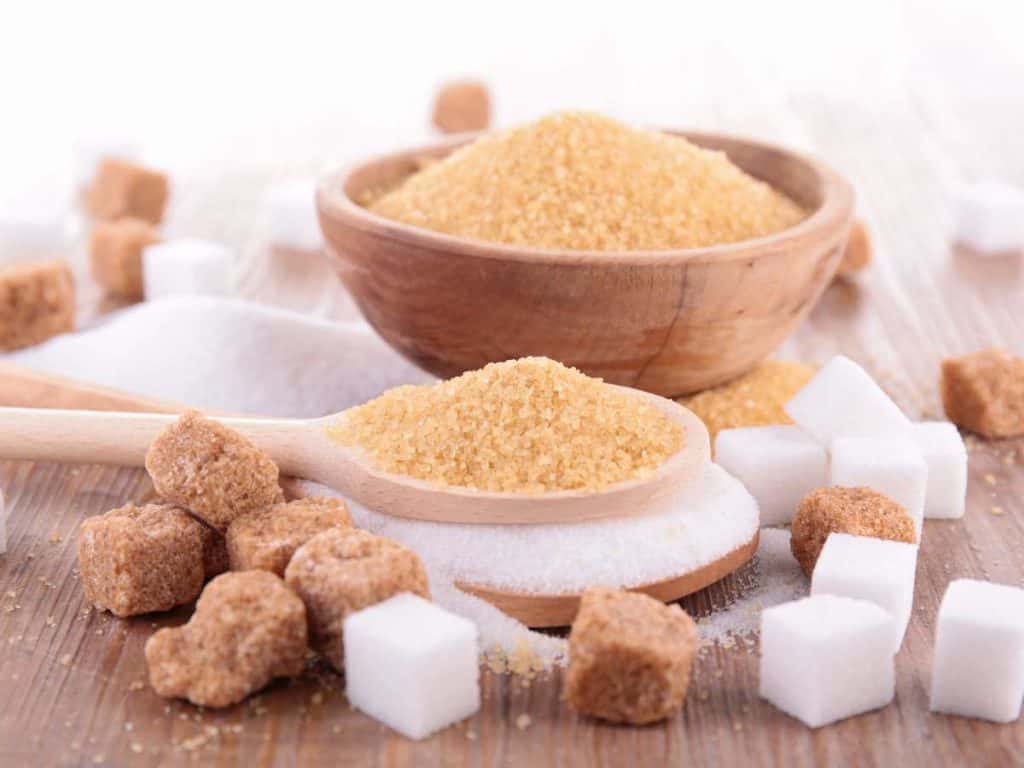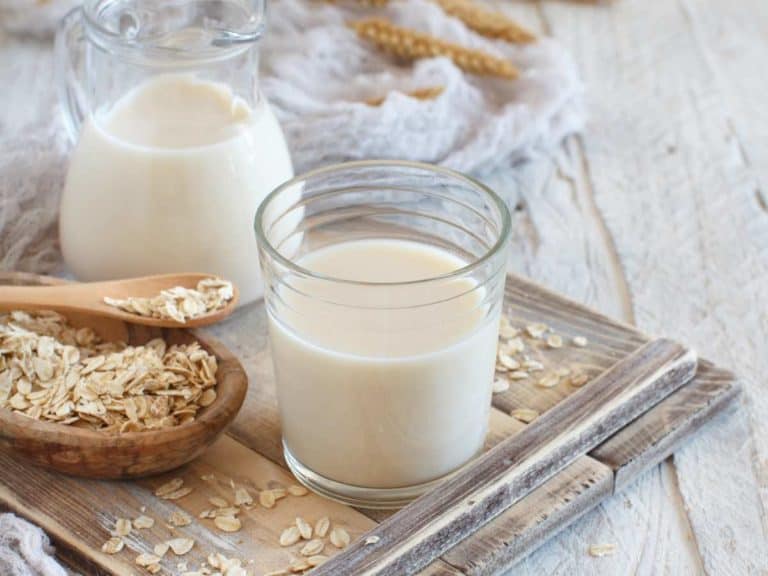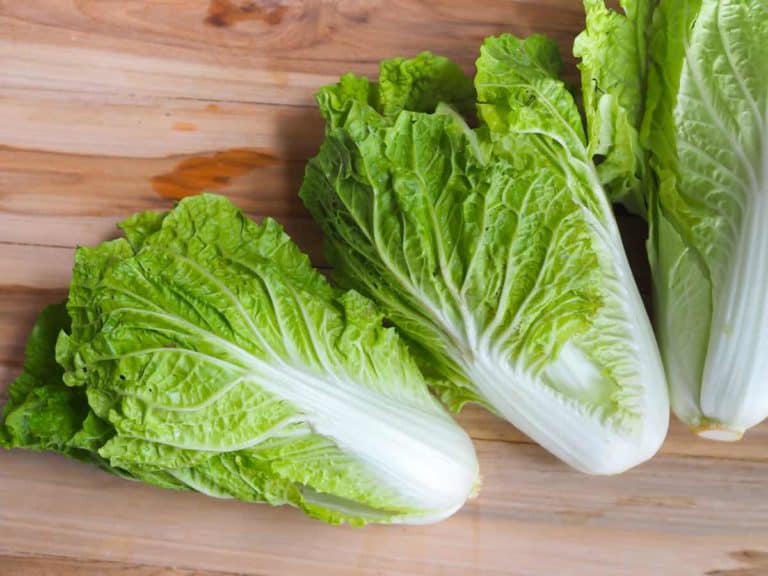Is Sugar a Dry or Wet Ingredient?
It’s plain to see that sugar is dry. But the recipe you are looking at suggests otherwise — it says that sugar is a wet ingredient. And now you can’t help but wonder if the author is talking about some type of dripping-wet sugar that your favorite supermarket or baking supplies store doesn’t seem to offer.
Sugar is technically a dry ingredient. As a matter of fact, the moisture content of white sugar, which is commonly used for baking, is only 0.075% at most. However, when used for baking, sugar is considered a wet ingredient. It is combined with other wet ingredients instead of dry ingredients.
They say that just a spoonful of sugar can make the medicine go down.
But the mention of sugar in the recipe you wish to make is giving you a splitting headache instead!
How can an ingredient be completely dry and referred to as wet? Do you have to dissolve sugar in water first to turn it from a dry to a wet ingredient? Or is it just a typographical error that, strangely, all recipe authors seem to be committing?
Continue reading. By the time you reach the end of this article, you will learn, once and for all, why sugar is considered a wet ingredient — well, at least in certain situations.

When Does Sugar Count as a Wet Ingredient?
Sugar counts as a wet ingredient only when used for baking. In any other recipe, sugar is considered a dry ingredient. As a wet ingredient for baking purposes, sugar is combined with other wet ingredients. This allows for the attainment of the desired consistency and texture of the batter.
Everyone knows that sugar tastes sweet. However, not a lot of people are aware of a particular property of this saccharine substance: it’s hygroscopic.
Simply put, something that’s hygroscopic readily absorbs water from the surrounding environment.
It’s exactly because of this why sugar is considered a wet ingredient that needs to be combined with other wet ingredients such as water, milk, melted butter, eggs, oil and corn syrup.
It will absorb the water in the wet ingredients, which is a good thing because it will allow you to obtain the consistency and texture required by the recipe.
Adding sugar to dry ingredients can lead to a disaster, particularly the minute the wet ingredients are added — sugar will start absorbing the water in the combined wet ingredients, wreaking havoc in the resulting mixture.
Because of this, the cake could end up crumbly instead of fluffy and the pastry could wind up fluffy instead of crumbly.
However, it doesn’t mean that sugar has to be mixed with wet ingredients all the time. As a general rule of thumb, if sugar is considered a wet ingredient in a recipe, it should be combined with other wet ingredients.
Cake recipes are the ones that usually regard sugar as a wet ingredient.
Besides being an art, cake-making is also a science. How ingredients react with one another, such as sugar and water and various wet ingredients, are taken into account, too, in order to obtain the desired result.
Read Also: What is Tepid Water and How do You Use it
What Happens If You Don’t Separate Wet and Dry Ingredients
Failure to separate wet ingredients and dry ingredients could lead to an uneven distribution of the ingredients. Due to this, it’s not unlikely for the resulting baked product to have an inconsistent texture or flavor. Besides separating wet and dry ingredients, combining them correctly matters, too.
It’s customary for recipes for baking cakes, muffins, cookies and other baked goodies to instruct mixing dry ingredients in one bowl and mixing wet ingredients in another, usually a larger one — we will discuss why wet ingredients have to be combined in a larger bowl in a few, so read on!
This is done to ensure equal distribution of the ingredients, including especially those that are responsible for the characteristic texture and taste of whatever it is that’s being baked.
It also makes the process of baking so much easier for the baker.
For instance, placing all wet and dry ingredients in a bowl and mixing them all together can result in a sticky or chunky mess that can prove to be extremely harsh on the arm or electric mixer.
Because of this, it’s not unlikely for the resulting baked treat to be abominable instead of delectable.
In baking, it’s a must to mix dry ingredients and wet ingredients separately. It’s also true that they will be combined sooner or later, just before they end up inside a preheated oven.
There is also a right way to mix the different ingredients: add the dry ingredients into the bowl of wet ingredients.
Doing it the other way around can cause the dry ingredients to end up clumpy and messy. It will also require you to work harder just to be able to completely combine the different ingredients, which can easily result in overmixing the batter.
You don’t want to overmix your batter, as it will make your baked masterpiece gummy and stretchy.
And due to the fact that the dry ingredients will eventually end up being mixed into the wet ingredients, it’s customary among seasoned bakers to combine all wet ingredients in a larger bowl.

Is Brown Sugar a Wet Ingredient?
Brown sugar is considered a wet ingredient if the recipe is for baking. Otherwise, it counts as a dry ingredient. This is true even if brown sugar is naturally soft and clumpy because of its moisture content. It’s due to this why brown sugar is typically used for making softer and moister baked goods.
It’s important to keep white sugar, the one we have been talking about all along since the start of this article, from excess moisture in order to save it from clumping. This is why storing it in an airtight container is vital.
When it comes to brown sugar, it’s a different thing — it should be kept from drying up.
Moisture is the thing that makes brown sugar an important wet ingredient in many baking recipes. The rich-colored and caramel-like flavored type of sweetener makes everything it’s added to moist as it naturally contains water. Brown sugar is 2% to 4% water. On the other hand, as mentioned earlier, white sugar is 0.075% water.
It’s not because of its high moisture content why brown sugar is considered a wet ingredient in the realm of baking.
It’s regarded as a wet ingredient, just like white sugar, as it has to be combined with other wet ingredients. Needless to say, if you encounter brown sugar in any other recipe, it counts as a dry ingredient.
But whether the baking recipe calls for white sugar or brown sugar, you can be certain that the wet ingredient will not only contribute sweetness to the resulting baked product but also moisture.
Sugar, no matter the color, is hygroscopic — it will hold on to the liquid in the batter as it cooks.
Just Before You Use Sugar for Baking
Sugar is a dry substance. But when it comes to baking, it’s considered a wet ingredient that’s supposed to be mixed with other wet ingredients the recipe also calls for.
So, the next time you encounter a recipe that refers to sugar as a wet ingredient, there’s no need to rush to the nearest supermarket or baking supplies store to get your hands on wet sugar — all you have to do is reach for that sugar jar in the kitchen and measure and mix away.
Related Questions
Why are ingredients folded in?
Instead of mixing in, there are some instances where ingredients have to be folded in. Folding is a method of combining ingredients without removing air from the mixture. Light and airy ingredients, like beaten egg whites, have to be folded into heavier ingredients, like cake mix, for a fluffy consistency.
Which artificial sweetener is best for baking?
Among all artificial sweeteners, sucralose is the only one that can be used to replace sugar cup for cup in any recipe. That’s because sucralose has pretty much the same level of sweetness and volume as sugar. Although heat-stable, however, sucralose tends to bake faster than white sugar.





